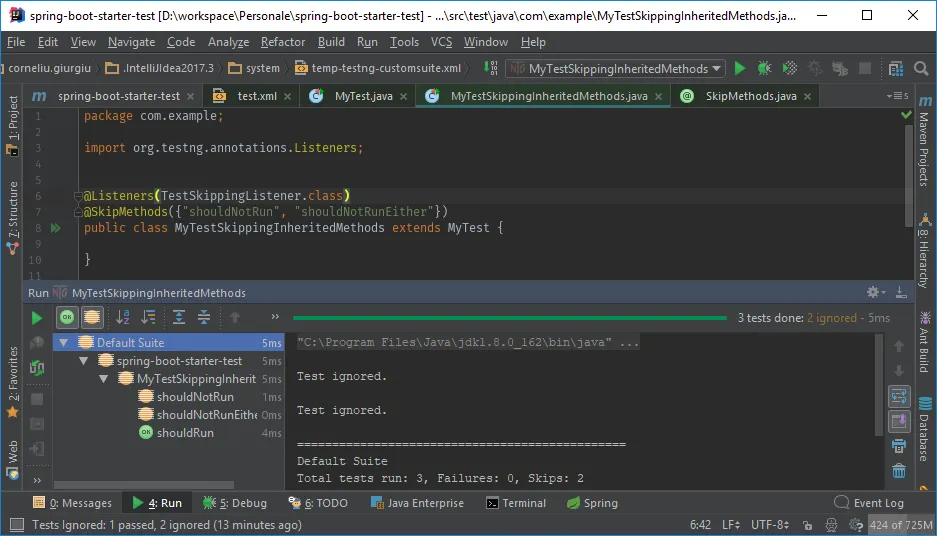(更新:我报告后,TestNG团队确认了该漏洞。)
通常可以使用
但是,在包含测试方法的超类中定义子类时,这种方法不起作用(子类在挂钩方法中定义其特定功能)。参见下面的
请注意,
基类
子类
通常可以使用
@Ignore或enabled=false来忽略一个类。但是,在包含测试方法的超类中定义子类时,这种方法不起作用(子类在挂钩方法中定义其特定功能)。参见下面的
ChildClassTest。请注意,
@Ignore专门针对JUnit,而TestNG使用enabled。基类
import org.testng.annotations.Test;
public class ParentClassTest {
@Test
public void test1() {
hook();
}
protected void hook() {};
}
子类
import org.testng.Reporter;
import org.testng.annotations.Ignore;
@Ignore
public class ChildClassTest extends ParentClassTest {
@Override
protected void hook() {
Reporter.log("ChildClassTest#hook()");
}
}


@Test(enabled = false),作为解决方法,直到发布适当的解决方案。这样,它将被跳过,而其余部分将按需要运行,希望可以尽量减少工作量。 - Morfic